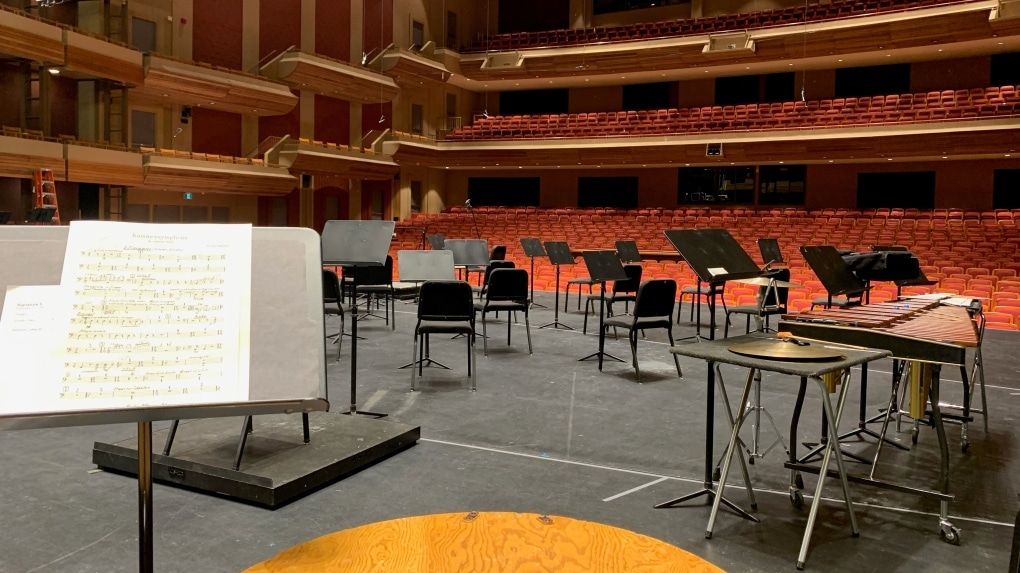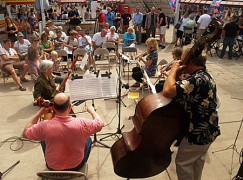Violin stolen at Euston station is being sold at auction
mainThis is a sombre ending. Min-Jin Kym, whose Stradivarius was stolen while she drank coffee in a London train station and then returned after a huge police effort, has decided to sell it. Life does not always pan out the way you plan.
Release below.

Stolen ‘ex-Kym’ Stradivarius to be sold
Stolen and recovered Stradivarius to be sold at auction by Tarisio in December 2013
The world-famous Stradivarius violin that was stolen from London’s Euston Station in 2010 and later recovered, will now be going on sale at auction on 18th December 2013.
The violin belonged to London-based violinist Min-Jin Kym, a celebrated international soloist and chamber musician and the story of the theft received worldwide attention and sympathy. After chasing leads across Europe, the instrument was recovered three years later by the police in the Midlands, astonishingly undamaged.
Though she has since acquired another Stradivarius violin Ms. Kym hopes the public sale of the violin will help close this chapter of her life; “This violin was a faithful friend for many years and I was devastated by its loss. Its recovery is an absolute relief and I am eager to hear the violin onstage once more and I wish its next owner all the best of luck and success.”
The ‘ex-Kym’ Stradivarius will be sold by Tarisio, the leading auction house for fine stringed instruments. “It is so exceptionally fortunate that Min-Jin’s violin was recovered safely and can now find its way into the hands of the next deserving owner,” says Jason Price, Director of Tarisio. “Min-Jin made a spectacular start to her career on this Stradivarius and we are certain the next owner will find similar success.”
Made in Cremona, Italy in 1696 by the Italian master Antonio Stradivarius, the ‘ex-Kym’ Stradivarius is one of an estimated 600 remaining instruments highly sought-after by performers and collectors. Stradivarius violins regularly sell for many millions of pounds; Tarisio set the current world record at public auction for a violin in 2011 with the sale of the ‘Lady Blunt’ Stradivarius for £9.8 million.
Launched in 1999, Tarisio combines the services of a traditional auction house with the efficiency and accessibility of online sales. Whilst Sotheby’s and Christie’s fine instrument departments have recently closed down, Tarisio has continued to expand, each year hosting nine auctions and continuing to set records in New York and London.
At the time of theft news reports valued the violin at £1.2 million. Online bidding for the auction will start at £1 million but the final price could fetch upwards of £2 million. A portion of the proceeds and sales commission will benefit the authorities who were instrumental in recovering the violin.
There will be a rare chance to see this celebrated Stradivarius on 27-28th October 2013 at the Westbury Hotel, Mayfair, where it will be shown as part of Tarisio’s London Public Viewing.






Sombre?
“Min-Jin Kym, whose Stradivarius was stolen while she drank coffee in a London train station and then returned after a huge police effort, has revealed the affair has left her so traumatised that she is to withdraw from concerts.”
That would be sombre. This story – violinist has acquired new Strad, stolen Strad has been recovered intact and is going back into circulation – has a happy ending.
Everyone who is anyone will be familiar with the term Stradivarius (violins, and cellos too, I understand) but in more than 60 years of following and loving classical music, I have never, once, read or heard what it is which places this brand at the top of the pile, and makes them worthy of the huge cost of ownership.
Would some kind soul care to explain to me what it is, and are the ‘differences’ discernible by us lesser mortals?
Thank you; I’d love to know.
The popular theory is that the wood used by them at that time was subjected to what was known as the “Little Ice Age.” The wood had considerably more water in it because of this, making it more dense after it was prepared for crafting. There are a few arguments against this belief, but I think the important thing is that for someone who’s been listening with enjoyment for more than 60 years, you haven’t heard any distinction. Quite frankly, I’ve been playing cello longer than I care to remember and I can’t tell too much of a difference myself. I’ve always chalked it up to an elitist mentality that isn’t worth paying any mind to. Additionally, I would much rather support modern luthiers who maintain the high craft of making these instruments.
Honestly, Lebrecht nailed this debate in his recent Standpoint essay on Stradistupidity.
No one listens to critics. lol…
One hopes it is sold to be played and not put in a museum.
Study after study, involving musicians playing behind screens or blindfolded, has shown that Strads do not sound better than well-made violins. Of course they aren’t really Strads anyway, since the internals have been substantially altered to make them louder for modern concert halls (which are now all amplified anyway, go figure). So it is always amazing to me that people will choose one simply as a status symbol, when they could sound better playing something else. Part of this is the media hype, part of it is the economics of the music business, but a large part of it is a special kind of self-centered attitude.
Which concert halls use amplification? I’m not aware of it in any major UK concert hall.
After the violin was stolen from under her nose once, I imagine that her insurance premiums on that instrument rose enough that it wasn’t worth keeping it.
Nail on head.